Carb Cycling Meal Plan Secrets That Actually Work (Beyond Basic High-Low Days)

I used to be one of those people bouncing between “good carb days” and “bad carb days,” wondering why I felt like garbage half the time. Turns out, I was missing some pretty important pieces of the puzzle that nobody talks about.
Most carb cycling advice makes it sound simple – just eat high carbs some days, low carbs others. But after spending way too much time feeling tired, cranky, and constantly fighting cravings, I realized there’s so much more to it. Your body has its own schedule for when it wants carbs, your gut bacteria get moody when you don’t feed them right, and your hormones are basically running the whole show behind the scenes.
This isn’t another cookie-cutter meal plan that’ll have you eating plain chicken and broccoli. It’s about understanding how your unique body responds to carbs so you can actually have energy, lose weight if that’s your goal, and feel good while doing it. With “45% of Americans actively trying to lose weight” according to Daily Burn, figuring out what actually works has never been more important.
Table of Contents
- Working With Your Body’s Natural Clock
- Your Gut Bacteria Are Part of the Equation
- How Smart Carb Timing Might Help You Age Better
- Creating Your Personal Blueprint Using Real Data
TL;DR
- Your body processes carbs differently throughout the day – timing matters way more than just amounts
- Your gut bacteria are like tiny roommates who get cranky when you feed them the same thing every day
- Strategic carb breaks can kick-start your body’s natural repair processes
- Glucose monitors (yes, the diabetic kind) can show you exactly how your body reacts to different foods
- Ladies: your period affects how you handle carbs – work with it, don’t fight it
- That afternoon mood crash? It’s connected to when and how you eat carbs
- Your sleep tracker can actually tell you when your body needs more or fewer carbs
Working With Your Body’s Natural Clock Instead of Fighting It
I used to think carb cycling was all about willpower and forcing myself to stick to rigid meal times. Then I learned something that changed everything: your body has built-in clocks that control when you’re actually ready to handle carbs versus when you’re better off without them.
You know that natural energy boost you get in the morning? There’s actually a sweet spot about 2-3 hours after you wake up when your body is primed to handle carbs really well. By timing my carb intake with these natural patterns instead of fighting them, I stopped getting those energy crashes that used to make me want to nap under my desk every afternoon.
Understanding how your body’s natural rhythms work is crucial, especially when you consider how intermittent fasting affects women differently based on hormonal changes. The key is working with your biology rather than against it.
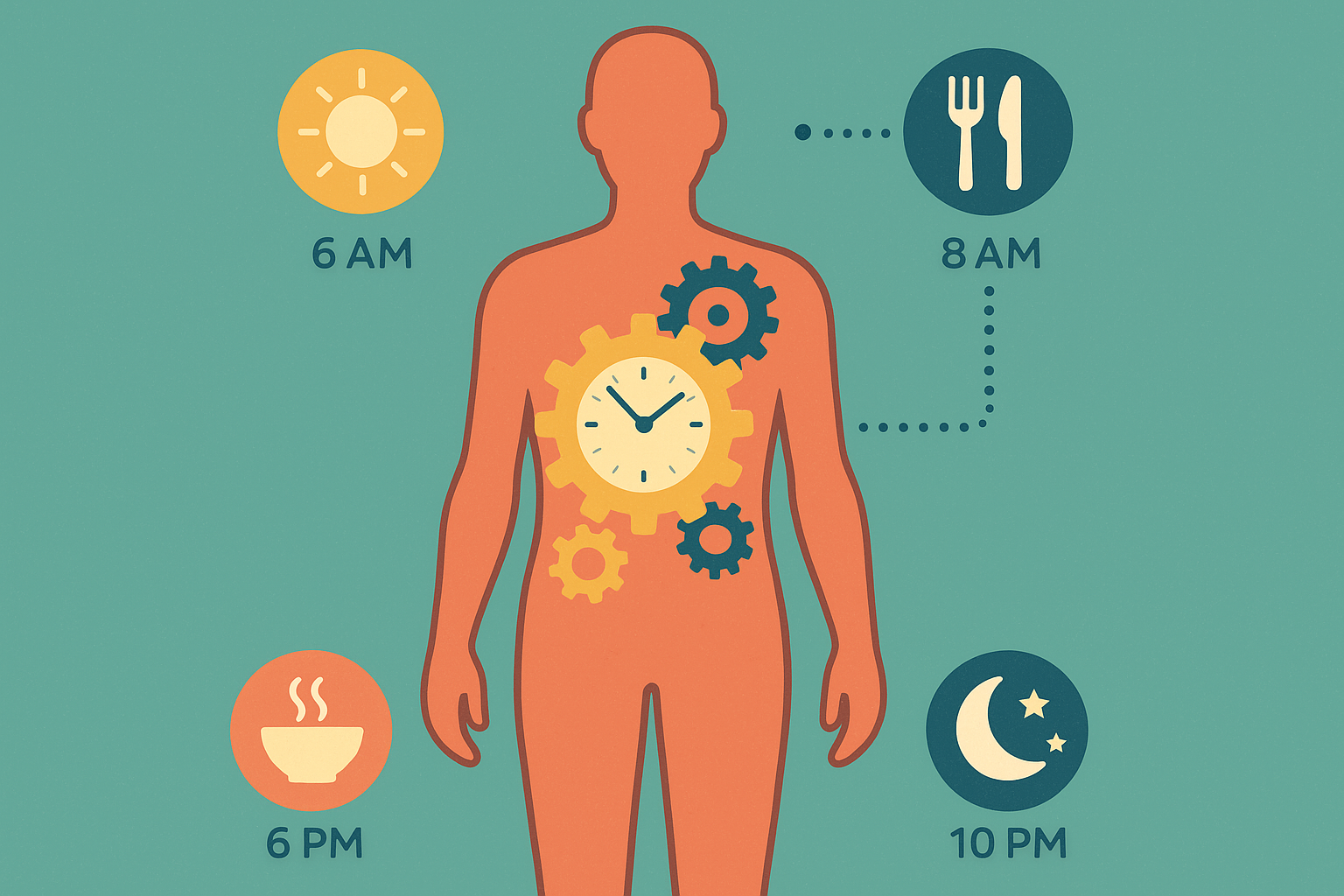
Your Body Doesn’t Process Carbs the Same Way at 7 AM vs 7 PM
Here’s something I wish someone had told me earlier: your ability to handle carbs changes dramatically throughout the day. It’s not just about willpower or metabolism – it’s about hormones like cortisol and insulin that are constantly shifting based on your internal clock.
What is carb cycling without proper timing? Basically just random eating with arbitrary rules that make you miserable. I learned this the hard way after months of wondering why I felt amazing some days and terrible others, even when eating the exact same foods.
Recent research highlighted by “Runner’s World UK” emphasizes that carb cycling involves “adjusting the amount you take on board each day depending on what level of training you’re doing,” but notes that this approach “doesn’t take into consideration the need for carbohydrate availability in the lead up to a run.” This is exactly why understanding your body’s natural carb-processing windows makes such a huge difference.
The Morning Sweet Spot That Changed Everything
Here’s the game-changer: that cortisol spike you get when you first wake up? You want to wait for it to settle down before hitting your body with carbs. I discovered that eating my complex carbs 2-3 hours after waking up (instead of immediately) eliminated those brutal 3 PM energy crashes.
My friend Sarah figured this out too. She’s a marketing executive who used to grab a bagel on her way to work at 7 AM, then crash hard every afternoon. Now she waits until 9 AM and has steel-cut oats with berries. Same carbs, different timing – completely different day.
For those looking to nail their morning carb game, learning how to cook delicious oatmeal every time can give you the perfect foundation for this timing strategy. How you prepare your carbs actually affects how your body processes them during that crucial morning window.
The Evening Recovery Window Nobody Talks About
There’s this magical 90-minute window before your body starts producing melatonin (usually around 9-10 PM) where eating the right carbs can actually help you recover while you sleep instead of storing fat. I know, it sounds backwards.
Your metabolism shifts into repair mode overnight, and giving it the right fuel at the right time enhances this natural process. I used to avoid carbs after 6 PM like they were poison. Turns out, strategic evening carbs have completely changed how I recover from workouts and how I feel the next morning.
Ladies, Your Period Affects How You Handle Carbs
This one’s huge and most carb cycling advice completely ignores it. Your hormones throughout your menstrual cycle dramatically change how your body processes carbohydrates. When you’re PMSing and craving everything in sight? That’s actually your body asking for more carbs because your hormones are working overtime.
I learned to work with these natural fluctuations instead of fighting them. Higher carb days during the luteal phase (when progesterone is high and you need more energy), lower carb periods during the follicular phase. Game changer.
| What’s Happening | Your Hormones | What Your Body Wants | Carb Strategy |
|---|---|---|---|
| Days 1-14 (Follicular) | Estrogen rising | Steady energy | 100-150g carbs |
| Days 12-16 (Ovulation) | Estrogen peaks | Moderate fuel | 150-200g carbs |
| Days 15-28 (Luteal) | Progesterone high | More energy | 200-300g carbs |
| Days 1-5 (Period) | Everything drops | Comfort food | 150-250g carbs (be kind to yourself) |
Getting the Most Out of Your Food During Different Phases
Once I stopped just counting macros and started paying attention to when my body could actually absorb nutrients properly, everything changed. The timing and availability of vitamins and minerals during different carb cycling phases can either supercharge your results or completely sabotage them.
I discovered that certain nutrients work way better with specific metabolic states. It’s like having the right key for the right lock – timing matters more than I ever realized.

Rotating Minerals Based on Your Carb Days
I started rotating mineral-rich foods based on whether I was having high or low carb days, and the difference in how I feel is remarkable. On high-carb days, I focus on magnesium, zinc, and chromium-rich foods to help my body actually use those carbs for energy instead of storing them. During low-carb phases, I emphasize fat-soluble vitamins since my body is better equipped to absorb them when running on fat.
Research shows that “high carb days should contain anything above 150g carbs while low carb days should stay at or below 100g carbs” according to JCD Fitness. These thresholds help me know when to emphasize different nutrients for optimal support.
Plant Compounds That Actually Make a Difference
Certain plant compounds became game-changers on my moderate-carb days. Berberine and cinnamon extract help your body handle glucose better and reduce the inflammation that can come with carb metabolism. But here’s the key – they work best during transitional carb days, not on extreme high or low days.
My friend Tom discovered that taking berberine with his post-workout sweet potato made a huge difference in how he felt afterward – no energy crash, better recovery, and he actually looked forward to his next workout instead of dreading it.
Training Your Body to Switch Between Fuel Sources
The real goal isn’t just losing weight or having more energy (though those are nice side effects). It’s training your body to efficiently switch between burning carbs and burning fat depending on what’s available. This metabolic flexibility is what separates people who maintain their results long-term from those who yo-yo diet forever.
When your body gets good at this fuel switching, you have steady energy whether you’re eating a sweet potato or skipping a meal entirely. That’s freedom.
Transition Days That Prevent the Dreaded Crash
The switch between high and low-carb periods used to leave me feeling like I’d been hit by a truck. Then I discovered what I call “bridge days” using medium-chain triglycerides (MCTs). These help maintain energy while your metabolism learns to switch gears without the typical brain fog and irritability.
Think of MCTs as training wheels for your metabolism. They give your body an easy-to-use fuel source while it’s learning to efficiently burn fat again. This eliminated the “carb flu” that used to make me want to quit entirely.
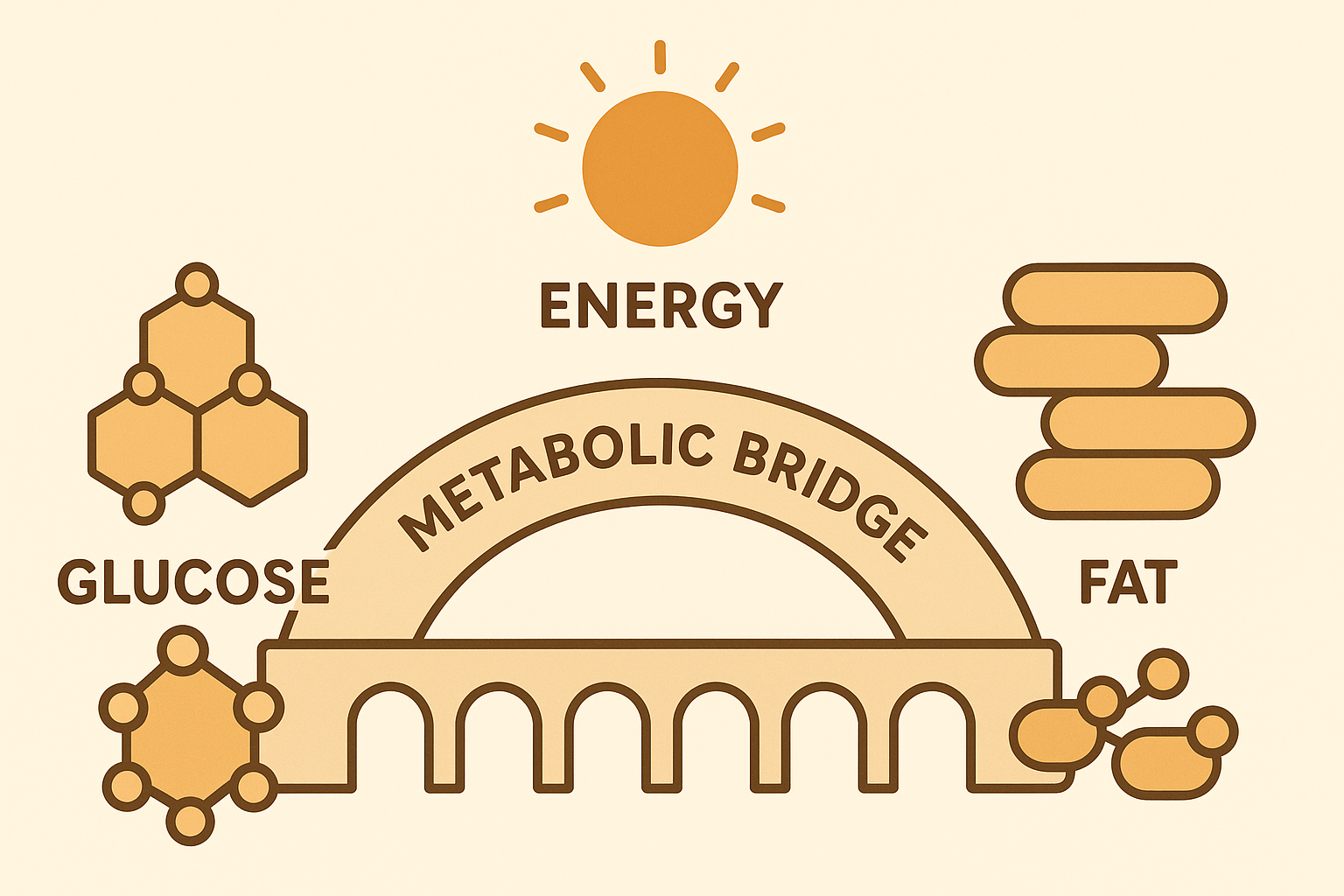
Your Gut Bacteria Are Part of the Equation
Here’s something weird I learned that blew my mind: the bacteria in your gut actually talk to your brain. And what you feed them changes the conversation. Your gut bacteria are basically tiny roommates who get cranky when you feed them the same thing every day, and when they’re unhappy, they make you unhappy too.
This connection between gut health and mood through strategic fiber timing has become a cornerstone of my approach. The relationship becomes even more important when you understand how drinking vinegars support digestive health and can work alongside your carb cycling strategy.
When I started thinking about carb cycling as feeding my gut bacteria different things at different times, everything clicked. It’s not just about macros – it’s about keeping your entire internal ecosystem happy and diverse.
Keeping Your Gut Bacteria Happy With Variety
Your gut bacteria are incredibly adaptable, which can work for or against you. I learned that rotating different types of fiber and resistant starches prevents your digestive system from getting lazy while promoting the growth of beneficial bacteria that actually help you process carbs better.
This isn’t just about avoiding bloating (though that’s a nice bonus). It directly impacts how efficiently your body handles carbohydrates and maintains stable energy levels throughout the day.

Four Types of ‘Good’ Starches and When to Use Them
There are basically four types of “good” starches that feed your gut bacteria different things. Think of it like having four different snacks for your internal pets. Each one serves a specific purpose and feeds different bacterial strains that produce different benefits for your metabolism and mood.
I rotate these throughout the week based on my carb cycling schedule to keep my gut bacteria diverse and prevent any one strain from taking over (which can cause digestive issues and mood swings).
| Type | What It Is | When I Use It | What It Does |
|---|---|---|---|
| Raw starches | Raw oats, legumes | Morning, high-carb days | Feeds the happy bacteria |
| Green starches | Green bananas, raw potato starch | Before workouts | Gives energy-boosting bacteria |
| Cooled starches | Leftover rice, cold potatoes | After workouts | Produces anti-inflammatory compounds |
| Modified starches | Potato starch powder | Low-carb transition days | Keeps diversity without many carbs |
My Weekly Gut Health Rotation
I follow a simple weekly rotation of different fiber sources to keep my gut bacteria diverse and prevent the digestive issues that used to plague me during carb cycling phases. It sounds complicated, but it’s really just about eating a variety of plants throughout the week.
Supporting your digestive system becomes easier when you know simple ways to beat bloat and improve digestion through strategic food timing. This approach ensures your gut stays happy throughout different metabolic phases.
My Weekly Gut-Happy Checklist:
- ☐ Monday: Garlic and onions (they love these)
- ☐ Tuesday: Apples and citrus fruits
- ☐ Wednesday: Oats and mushrooms
- ☐ Thursday: Whatever resistant starch I’m rotating
- ☐ Friday: Mixed prebiotic foods
- ☐ Saturday: Fermented foods like sauerkraut
- ☐ Sunday: Whatever vegetables I have on hand
How Carb Timing Affects Your Brain Chemistry
Ever notice how you feel happier after eating certain carbs? That’s not in your head (well, technically it is). The relationship between when you eat carbs and your brain chemistry is fascinating and completely underused in most approaches to carb cycling.
I figured out how to leverage this connection for better mood stability and mental clarity, using specific timing windows to naturally boost feel-good chemicals without the sugar crash that usually follows.
According to “GQ Magazine UK”, carb cycling practitioners find that “carbs are energy” and timing them around training optimizes both physical performance and mental clarity, though experts warn this approach “doesn’t acknowledge calories.” This highlights why understanding both the energetic and mood effects of strategic carb timing is so important.
Getting That Mood Boost Without the Crash
I learned to time complex carbohydrates with tryptophan-rich foods during specific windows to naturally boost serotonin production without the rollercoaster that comes with simple sugars. The key is understanding which foods work together and when your brain is most receptive to them.
My friend Tom discovered that combining quinoa with turkey at 4 PM created a natural mood boost without the evening sugar cravings he used to get. This strategic pairing helped him stay emotionally stable during his low-carb phases while supporting natural serotonin production.
Using Low-Carb Phases to Sleep Better
Strategic low-carb phases combined with specific amino acids and magnesium have dramatically improved my sleep quality and stress resilience. During these periods, my nervous system gets a break from constantly processing glucose, which allows for deeper recovery and better stress management.
This has become one of my favorite benefits of intelligent carb cycling. The sleep improvements alone make this approach worth it, even before considering all the metabolic benefits.
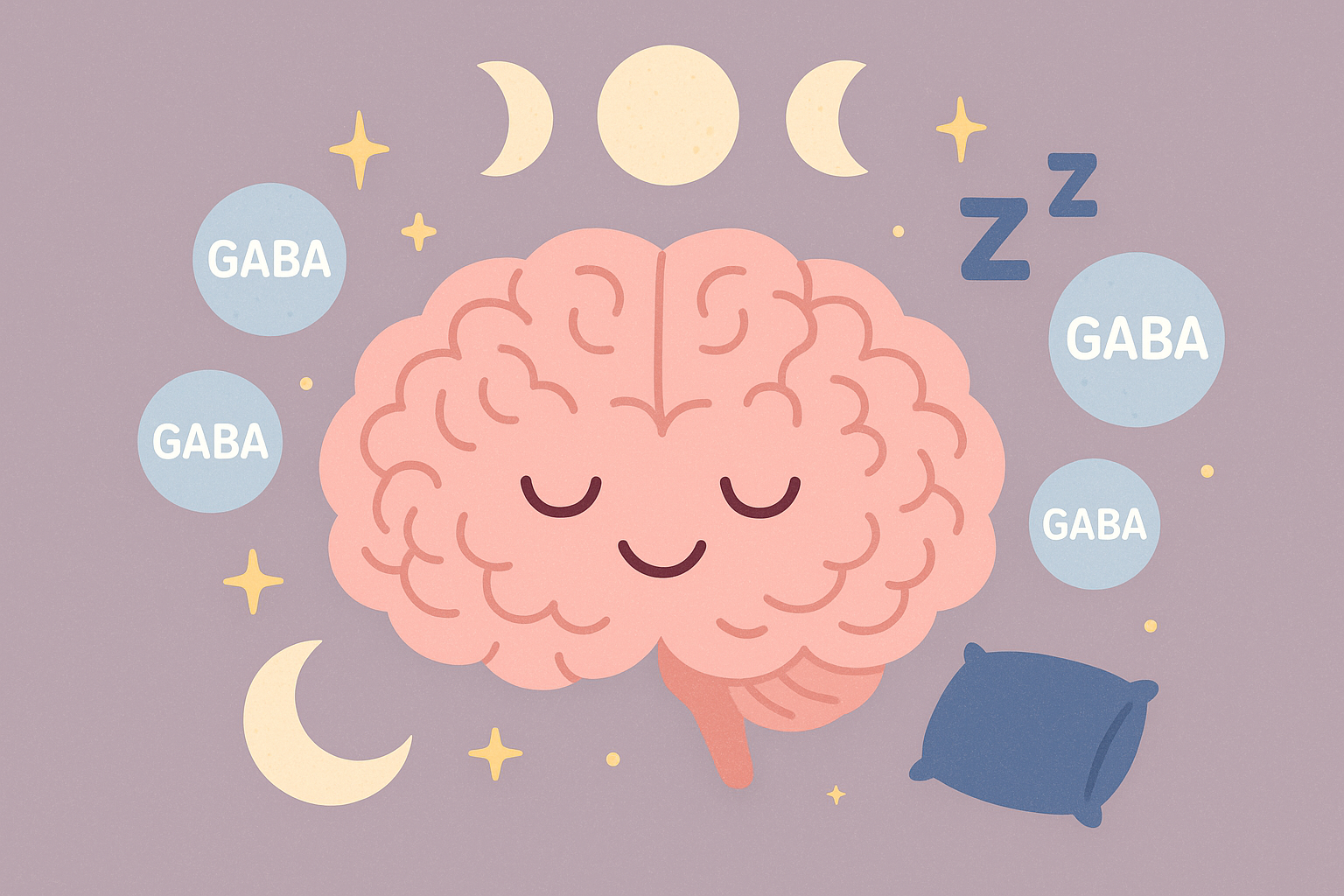
How Smart Carb Timing Might Help You Age Better
I’m not saying carb cycling is the fountain of youth, but there’s some pretty cool science showing that giving your body strategic breaks from constant carb processing might help with the whole aging thing. It’s about using food timing as a tool to optimize how your genes express themselves for better health and longevity.
The cellular repair benefits of strategic carb restriction align with understanding how to activate autophagy in your cells for enhanced longevity and metabolic health. This level of carb cycling goes way beyond just trying to lose weight – it targets the fundamental processes that affect how we age.
When you understand how strategic carb manipulation influences your genes, carb cycling becomes a powerful tool for optimizing how your cells function and promoting healthy aging.
Triggering Your Body’s Natural Cleanup Process
Your body has this amazing built-in cleanup system called autophagy – basically, your cells eating their own damaged parts to make room for new, healthy ones. I learned that specific carb cycling patterns can strategically activate this process for enhanced longevity and cellular regeneration, way beyond simple body composition goals.
The key is understanding how to balance growth-promoting periods (when you’re eating more carbs) with repair-promoting periods (when you’re giving your digestive system a break) for optimal health outcomes. This approach targets health at the cellular level, where real improvements begin.

Balancing Building and Cleaning Phases
Your body basically runs two different programs – one for building (muscle, energy stores) and one for cleaning up (damaged cells, metabolic waste). I learned to strategically alternate between growth-promoting higher carb days and repair-promoting lower carb days to get the benefits of both without the downsides of either extreme.
Research indicates that “setting specific, challenging goals can increase exercise adherence by up to 23%” according to Daily Burn, highlighting why having a structured approach to these metabolic phases makes such a difference.
This precision in timing allows you to harness both building and cleaning processes instead of fighting against your body’s natural tendencies.
Getting Anti-Aging Benefits Without Extreme Restriction
Periodic carb restriction phases can activate longevity genes without the negative metabolic slowdown that comes with chronic dieting. This approach lets me get some of the anti-aging benefits of caloric restriction without feeling like I’m starving myself or destroying my metabolism.
Strategic stress on your system, rather than chronic deprivation, becomes the foundation of sustainable results. This method targets genetic pathways associated with longevity while keeping your metabolism healthy and responsive.
Managing Inflammation Through Smart Carb Timing
Using carb cycling to manage inflammation through strategic timing of anti-inflammatory foods has become crucial for how I feel day-to-day. The relationship between carbohydrates and inflammation is complex and highly individual – what causes inflammation in one person might be perfectly fine for another.
This inflammatory management aspect affects everything from how quickly you recover from workouts to how clearly you think. When you control inflammation through strategic carb timing, you’re addressing one of the root causes of feeling crappy.
Balancing Omega-3s With Your Carb Intake
I adjust my omega-3 fatty acid intake inversely with my carbohydrate consumption to maintain optimal inflammatory balance and support recovery from exercise-induced inflammation. When my carb intake is higher, I reduce omega-3s slightly; when carbs are lower, I increase them.
This dynamic approach has significantly improved my recovery and overall inflammatory markers. It requires paying attention to multiple variables, but the precision makes a real difference in how I feel.
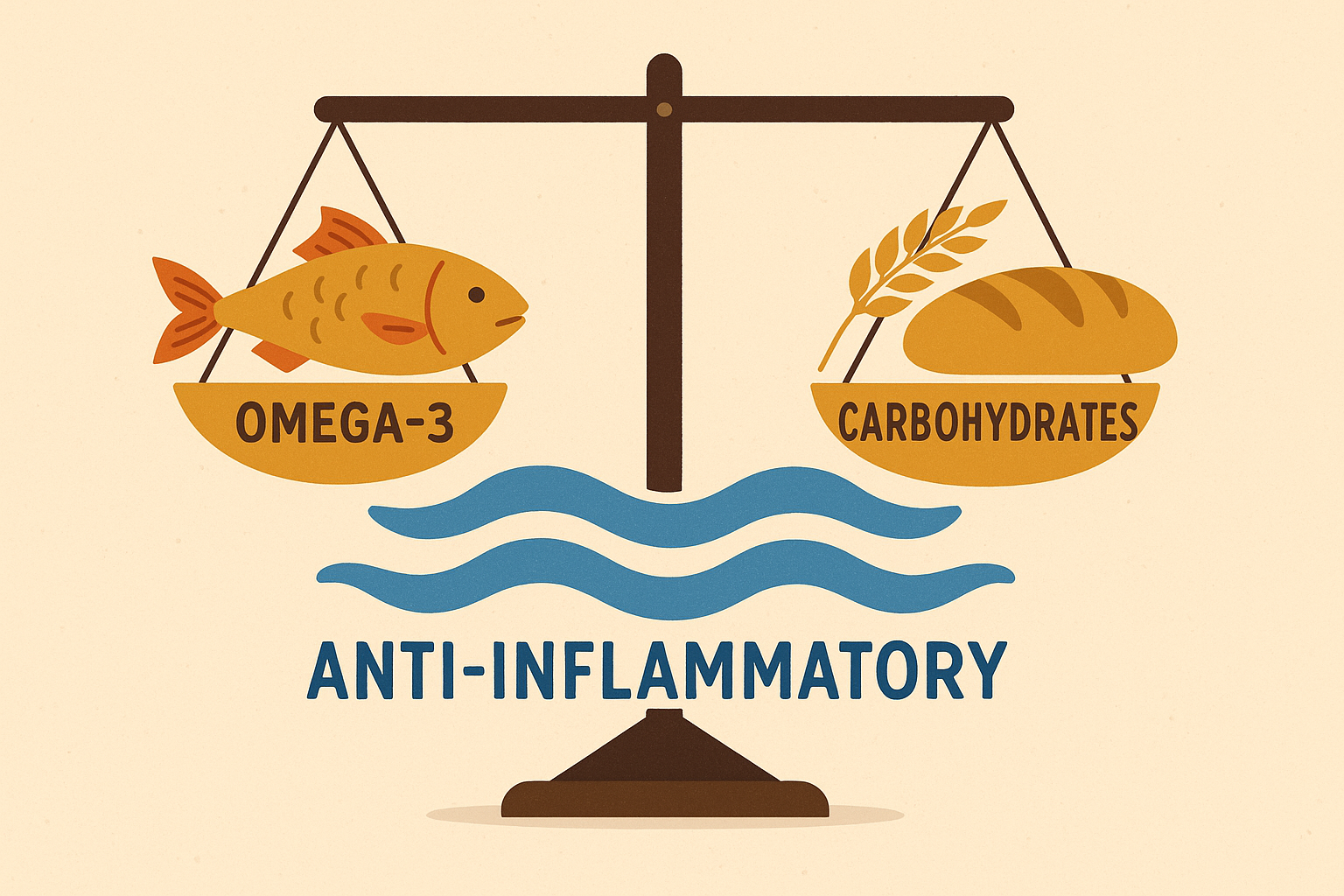
Creating Your Personal Blueprint Using Real Data
Generic meal plans never worked for me until I started using real-time feedback to create individualized protocols. Moving beyond one-size-fits-all approaches and incorporating actual data about how my body responds has been a game-changer.
Your body’s unique responses to different carbohydrates, timing, and quantities can only be discovered through personalized observation and testing. This data-driven approach to carb cycling eliminates the guesswork and creates protocols based on your individual metabolic fingerprint.
Using Glucose Monitors to Dial In Your Personal Response
I started using one of those glucose monitors that diabetics use (you can get them without a prescription now) to create personalized carb cycling schedules based on my individual glucose response patterns. Instead of guessing how different foods affect me, I have real-time data showing exactly what works and what doesn’t.
Game changer. This technology has taken the guesswork out of carb cycling entirely. Understanding your individual carb tolerance becomes even more precise when you learn how to find your carb tolerance with simple testing methods that complement continuous glucose monitoring.
The precision available through this technology transforms carb cycling from guesswork into actual science.
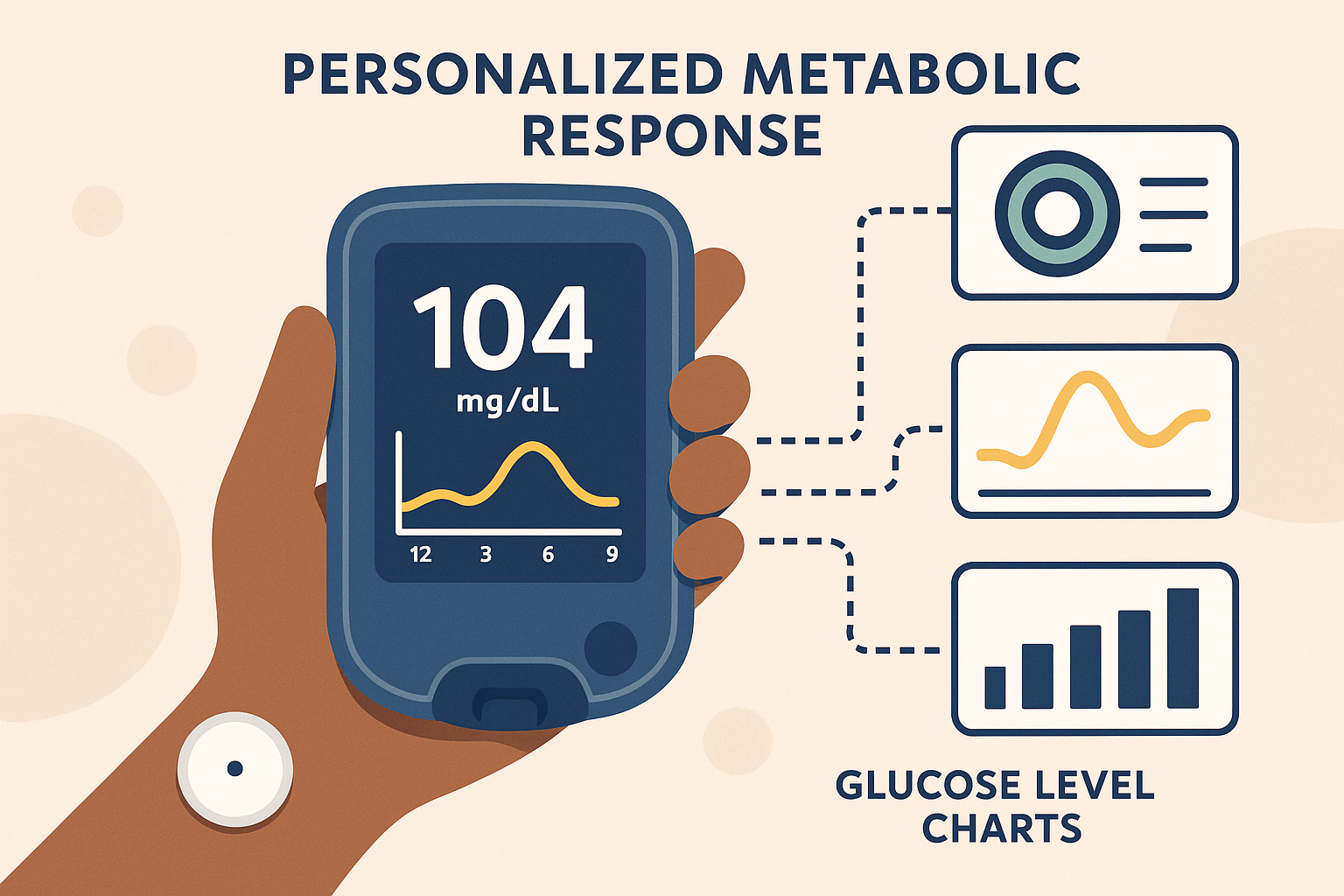
Finding Your Personal Food Responses
Analyzing my unique glucose response patterns helped me identify optimal carb sources, timing, and quantities that minimize blood sugar spikes while maximizing energy availability. What works for others might be completely wrong for my metabolism, and glucose monitoring revealed these individual differences in ways that completely transformed my approach.
Maria discovered through glucose tracking that sweet potatoes caused a 40% smaller glucose spike than white rice, even with identical carb amounts. This data led her to swap her post-workout white rice for sweet potatoes, resulting in better energy stability and improved recovery.
This level of personalization ensures optimal metabolic responses based on individual physiology rather than generic recommendations that might not work for you.
Perfecting Your Post-Workout Carb Window
Using post-workout glucose monitoring allowed me to determine precise carb timing and amounts needed for optimal recovery without overshooting my body’s ability to actually use those carbs. This prevents the energy crashes and fat storage that can occur when you eat too many carbs too soon after exercise.
The data shows exactly when my muscles are most receptive to carbohydrate uptake, which maximizes how much goes to muscle recovery versus fat storage.
My Post-Workout Protocol:
- ☐ Check glucose immediately after working out
- ☐ Wait for glucose to return to baseline (usually 30-60 minutes for me)
- ☐ Eat calculated carbs based on workout intensity
- ☐ Track glucose response for 2 hours after eating
- ☐ Adjust timing and quantity based on what I learn
- ☐ Record optimal windows for future workouts
Tracking More Than Just Weight and Body Fat
Looking at additional markers beyond weight and body composition gives me a complete picture of how effective my carb cycling approach really is. These markers reveal metabolic health improvements that might not show up on the scale but are crucial for long-term success and health.
Studies show that “77% of Americans are trying to limit or avoid sugars in their diet” according to the International Food Information Council Foundation, making personalized approaches increasingly important for health optimization.
This comprehensive approach ensures you’re optimizing health markers beyond just the number on the scale.
Using Ketone-Glucose Ratios to Track Metabolic Flexibility
I monitor the ratio between blood ketones and glucose as my go-to method for assessing how well my body switches between fuel sources and determining optimal cycling frequency for my individual metabolism. This index tells me when my body is efficiently switching between fuel sources and when I need to adjust my approach.
Understanding carb cycling at the metabolic level requires tracking these deeper biomarkers that reveal how well your body adapts to different fuel sources. This data provides insights that simple weight measurements can’t capture.

Long-Term Health Monitoring That Actually Matters
Using HbA1c and fructosamine trending shows me how my carb cycling protocol affects overall metabolic health and insulin sensitivity over time. These longer-term markers reveal improvements that daily glucose readings might miss, giving me confidence that my approach supports long-term health rather than just short-term results.
This comprehensive monitoring approach ensures that carb cycling benefits extend beyond immediate performance improvements to lasting metabolic health enhancements.
Using Sleep and Recovery Data to Optimize Timing
Aligning carb cycling with sleep quality and recovery data has enhanced my overall wellness outcomes beyond what I thought possible. Your nervous system’s readiness for different metabolic demands can be measured and used to optimize timing for maximum benefit and minimal stress.
This integration of recovery data with nutritional timing represents the cutting edge of personalized carb cycling protocols.
Letting Your Heart Rate Variability Guide Your Carb Decisions
I use heart rate variability data to determine when my nervous system is ready for higher carb days versus when it needs the metabolic rest of lower carb periods. When HRV is high, my body can handle more carbs; when it’s low, I know to keep things lighter.
This approach has improved both my results and how I feel day-to-day. Recovery optimization becomes even more effective when you understand the health benefits of cold showers as a complementary recovery tool that can enhance your carb cycling results.

Final Thoughts
Look, I know this sounds complicated. When I first learned about all this stuff, I wanted to throw my hands up and just eat pizza forever. But here’s the thing – you don’t need to do everything at once.
This approach to carb cycling represents a fundamental shift from generic meal planning to actually understanding how your unique body works. By working with your natural rhythms, keeping your gut bacteria happy, leveraging your body’s natural repair processes, and using real-time feedback, you can create a sustainable approach that goes way beyond traditional high-low carb cycling.
The beauty of this method is that it’s adaptable – as you learn more about your unique patterns, you can continuously refine your approach for better results. Whether you’re dealing with energy crashes, stubborn body composition goals, or just want to optimize your long-term health, these strategies provide a framework for creating lasting change that doesn’t make you miserable.
For those ready to take their approach to the next level, understanding the beauty benefits of marine collagen peptides can enhance these protocols, as Organic Authority offers high-quality, bioavailable supplements that support muscle maintenance and skin health during lower-carb phases while your body focuses on fat burning and cellular repair.
Will this turn you into a superhuman overnight? Nope. Will it help you stop feeling like you’re constantly fighting your own body? In my experience, absolutely.
Here’s the bottom line: your body is smarter than any diet plan. Once you start paying attention to what it’s telling you and work with it instead of against it, everything gets easier. The 7-day carb cycling meal plan framework I’ve outlined provides the structure needed to implement these strategies systematically.
Ready to discover your personal blueprint? Don’t try to do everything at once. Pick one thing – maybe it’s eating your carbs 2 hours after waking up, or just noticing how different foods make you feel. Start there. Your body will teach you the rest.
Start here: For one week, just notice how you feel 2 hours after eating different carbs at different times. Don’t change anything yet – just pay attention. That’s your first step toward creating a carb cycling approach that actually works for your unique body.

